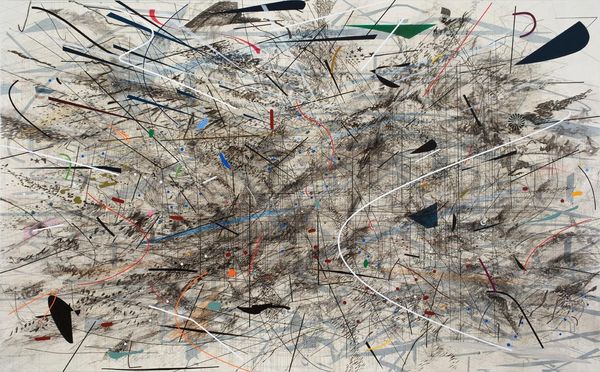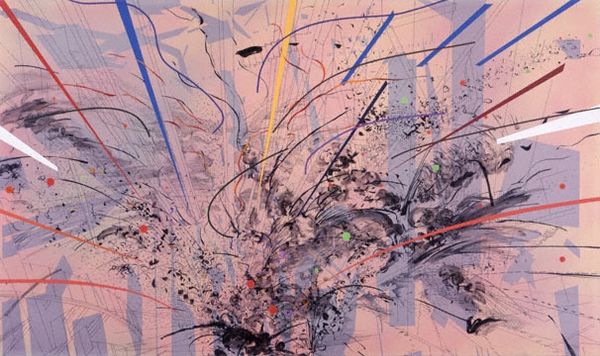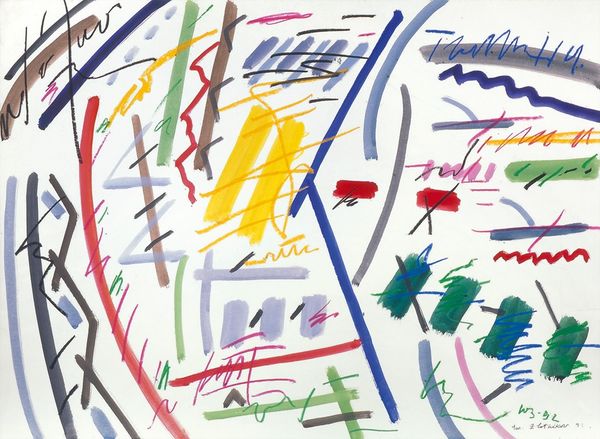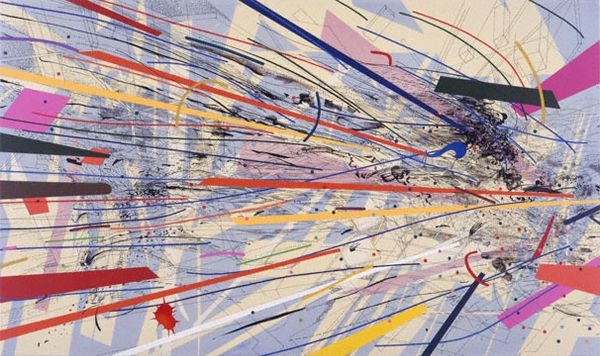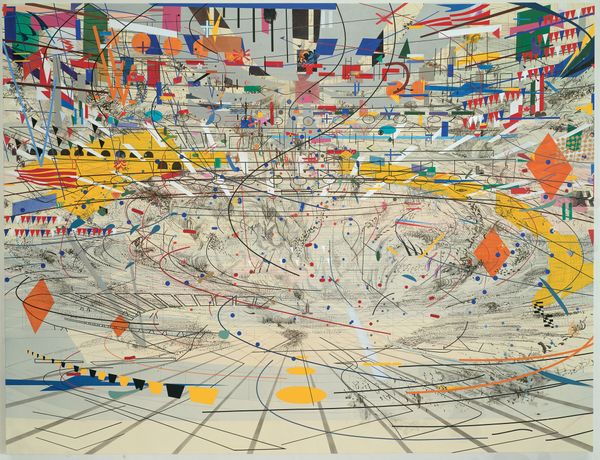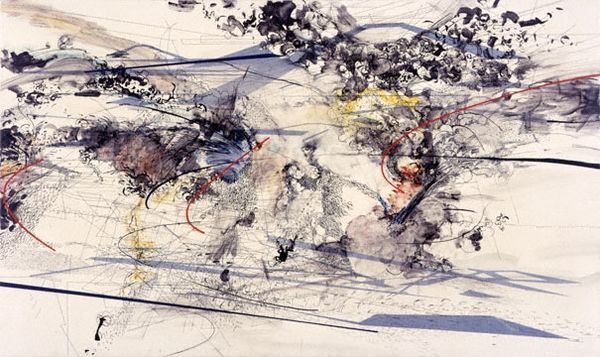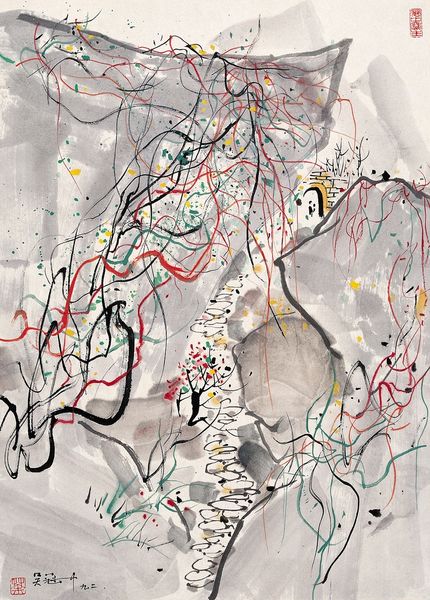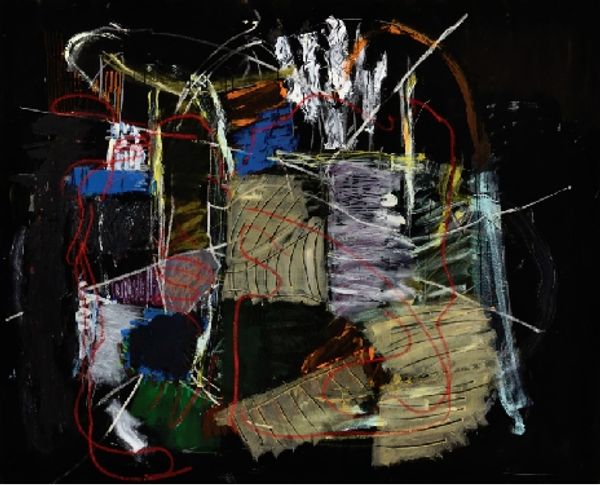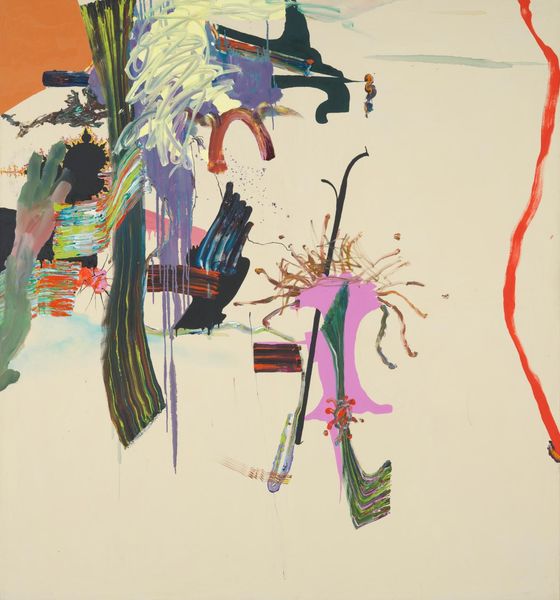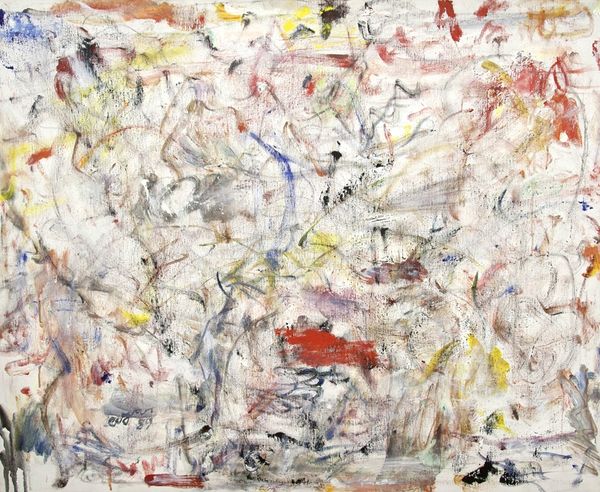
Copyright: Julie Mehretu,Fair Use
Curator: Julie Mehretu's "Stadia III" from 2004—an arresting mixed-media piece combining acrylic paint and other elements. It immediately overwhelms me, almost like a chaotic urban sprawl rendered with tremendous energy. Editor: Yes, it is overwhelming at first glance. There’s so much happening on the canvas, a whirlwind of geometric shapes and chaotic lines. I wonder, what does Mehretu seek to capture or represent in this dynamic, layered composition? The layers almost suggest a palimpsest, hinting at previous forms or ideas obscured beneath the surface. Curator: Exactly! She often explores the idea of mapping—architecture, cities, societies, movements—but it is all deconstructed. Considering the materials, she has a complex, multi-layered technique incorporating drawing, technical drafting, and printmaking processes. This allows her to investigate complex interactions. The interplay of those different processes yields unique visual experiences and intricate social commentaries. Editor: The 'Stadia' title makes me consider spectacles, perhaps the spectacle of political rallies or global sporting events. What sociopolitical undertones resonate through these forms? Do you think it also references historical avant-garde movements known for their radical politics of imagery? Curator: I certainly think so. Knowing Mehretu, the political and social commentary is deliberate. Her background is deeply intertwined with her art, shaping how she perceives and translates socio-political structures onto the canvas. We're seeing a kind of abstraction that addresses pressing contemporary issues. The question becomes, how do her means reflect the message? What about the production –the act of layering— speaks to the process of building up complex structures only to see them destabilized or dismantled? Editor: That resonates. Her production parallels a cycle of construction and deconstruction in social realms. It shows power struggles reflected within the composition, a visual discourse concerning authority and perhaps the collective. The materials –acrylic paint married with technical drafting – create not only depth but also imbue the work with a visual language appropriate for modern sociopolitical landscapes. Curator: Agreed, that resonates quite well. I find myself now deeply contemplating how historical contexts intertwine within her choices. Editor: A profound meditation. Let's now reflect on how galleries and museums provide spaces where audiences can further contemplate the impact of “Stadia III’s” grand complexity and layers, reflecting society's foundations through the very art presented.
Comments
No comments
Be the first to comment and join the conversation on the ultimate creative platform.

